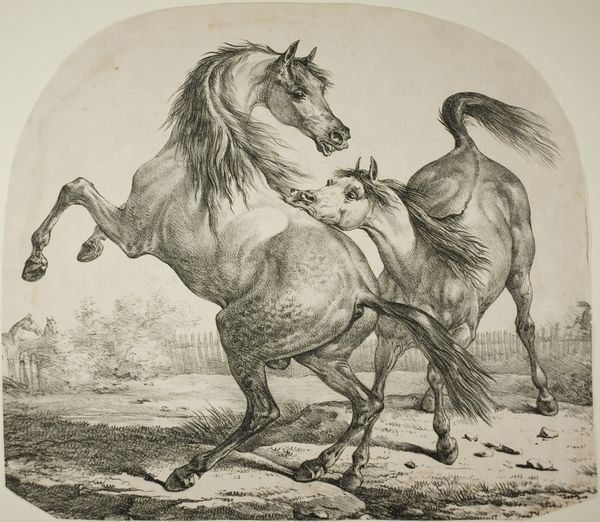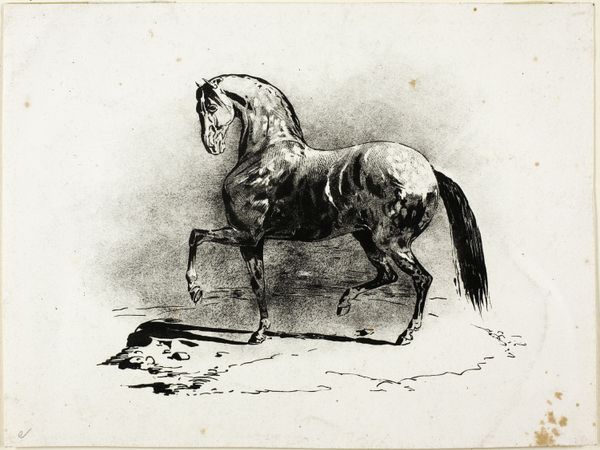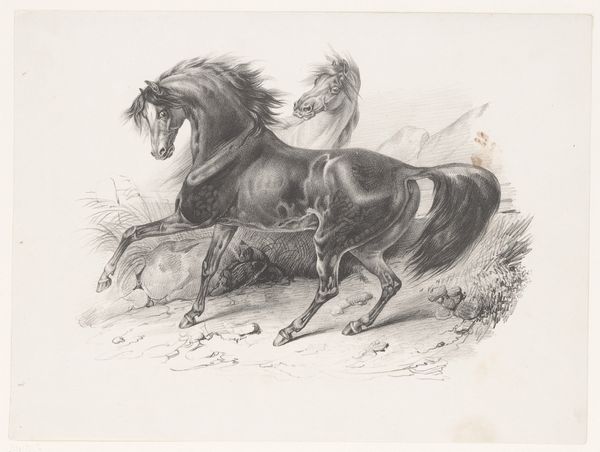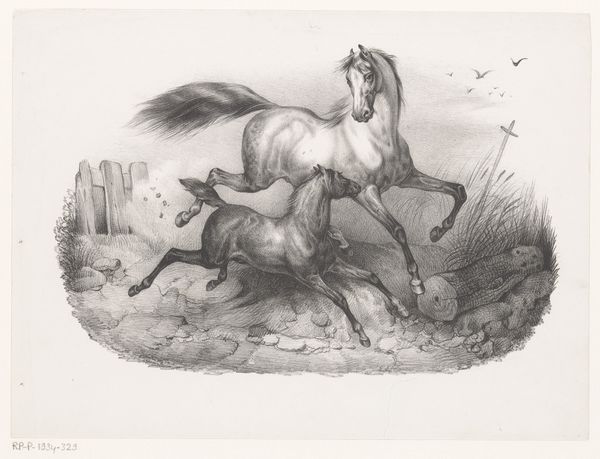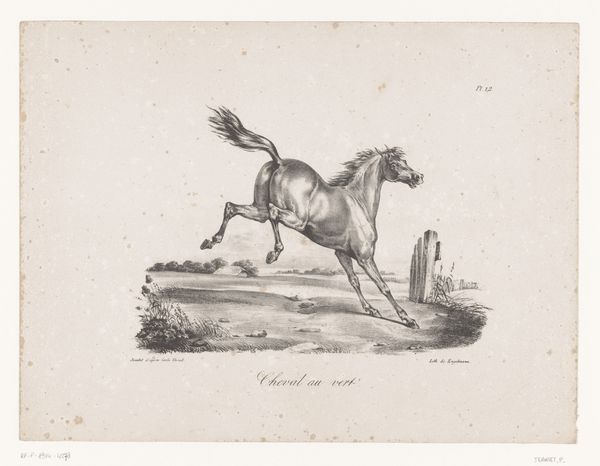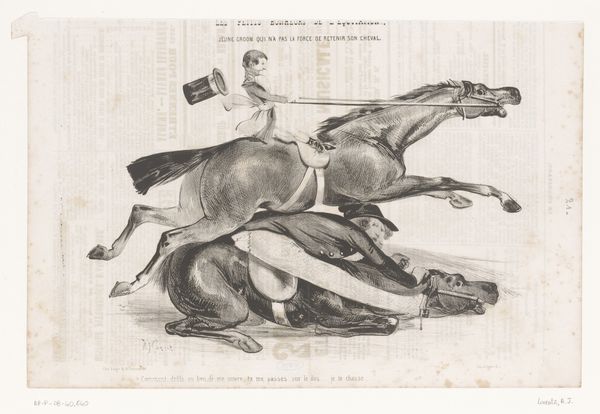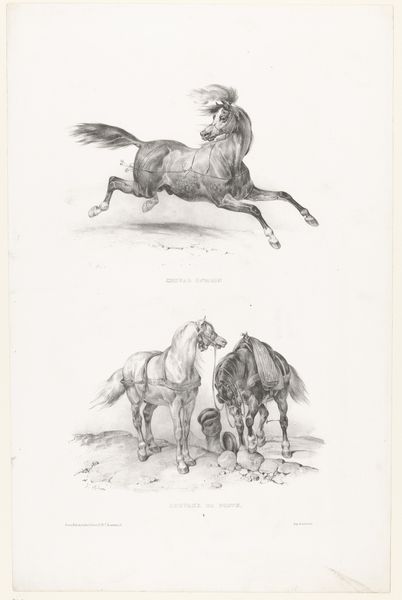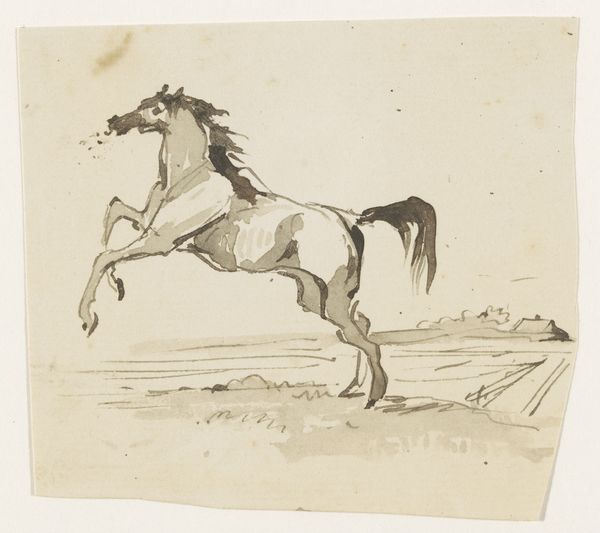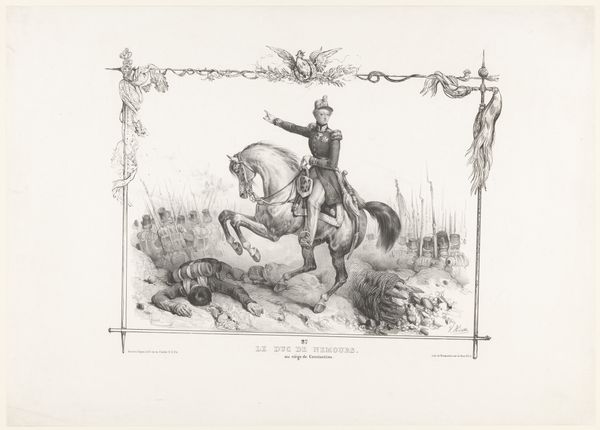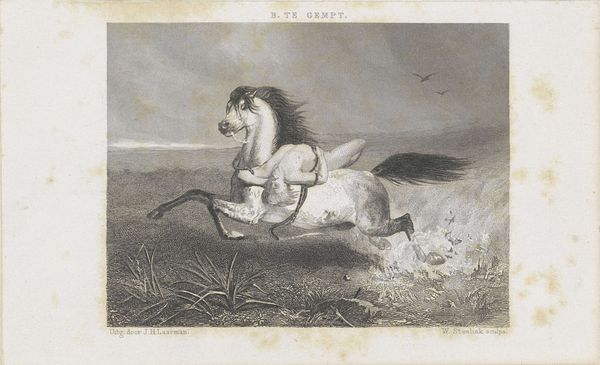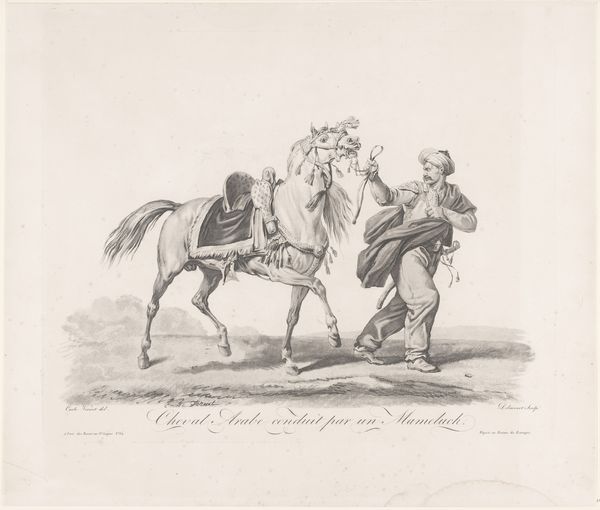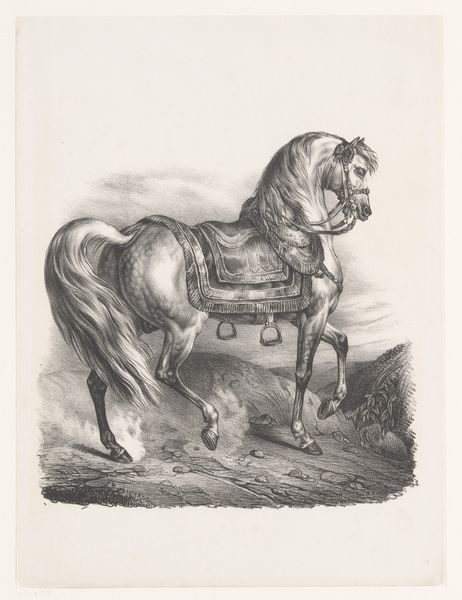
drawing, lithograph, print
#
drawing
#
lithograph
# print
#
landscape
#
line
#
realism
Dimensions: 5 1/2 x 8 in. (13.97 x 20.32 cm) (image)
Copyright: Public Domain
Curator: Look at the weight of this animal, and the dynamism the artist was able to capture with lithography. Editor: Yes, there is an inherent energy that is palpable in this work, a strength so deftly depicted. Here, we have "Horse Crossing a Barrier," a lithograph created by Louis-Pierre-Marie Courtin sometime between 1822 and 1823. It now resides at the Minneapolis Institute of Art. Curator: The interplay of light and shadow is masterfully handled. Consider how the darkness of the horse contrasts with the stark white background. This serves to emphasize the animal’s form. The precision with which the artist details the horse’s musculature is simply remarkable. Editor: I agree that the medium serves this goal but how does the context, the tools available affect its production? Knowing more about lithography processes of that time might allow one to explore Courtin's role as laborer and technician here. There are constraints. He has to be pragmatic and skilled. This impacts the composition. Curator: Of course. But note, how the composition directs our gaze. The placement of the barrier—off-center yet pivotal—divides the image plane, creating spatial tension. It’s not merely a representational scene; the forms achieve a deeper sense of meaning. Consider the geometry inherent in the barrier’s construction. Its angles and lines provide a subtle counterpoint to the horse’s organic form. The interplay heightens the feeling of movement. Editor: Right, the horse dominates, but it's a scene of subjugation: the barrier exists for its limitation. Also, one considers where the lithographic stone itself originated. Did this medium and scene of an active animal provide the public of the 1820s something unique as prints circulated more broadly? Curator: It invites reflection on our role in interpreting and responding to artistic expressions. Editor: A reminder that even art's beauty emerges from labor and constraint, prompting us to explore beyond the surface.
Comments
No comments
Be the first to comment and join the conversation on the ultimate creative platform.
